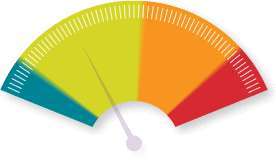Obesity
Obesity, in its simplest definition, is excessive fat accumulation in the body. According to researches across the globe, obesity is one of the most important health problems of the 21st century that is the second one of the preventable disease which causes death. Besides obesity causes many different diseases and death, also it causes psychosocial problems.
World Health Organization (WHO) defines and calculates obesity according to body mass index (BMI). The average body weight of people is as below:
- Man’s body fat index is 15-20%
- Women’s body fat index is 25-30%
However, since it is generally difficult to measure body fat index, the excess weight is commonly used instead of excessive fat for the classification. Therefore, obesity classification is done as below (See Table 1):
|
Classification (Weight Status) |
BMI (kg/m2) |
|
Severely underweight |
<16.00 |
|
Underweight |
<18.5 |
|
Moderately underweight |
16.00-16.99 |
|
Slightly underweight |
17.00-18.49 |
|
Normal (healthy) weight |
18.5-24.9 |
|
Overweight |
25-29.9 |
|
Pre-obese |
27.50-29.99 |
|
Obese |
≥30 |
|
Class 1 |
30-34.9 |
|
Class 2 (severe obese) |
35-39.9 |
|
Class 3 (morbid obese) |
≥40 |
|
Class 4 (super obese) |
≥50 |
|
Table.1 |
There are many factors in obesity etiology that include:
- Excessive energy intake
- Less-energy consuming
- Genetic predisposition
- Low-fat oxidation
- Decreased sympathetic activity
- Psychological stress
- Low socioeconomic status
It has known that there are some genes –such as insulin, leptin, ghrelin, POMC, MC4R– that causes obesity. However, the genetic changes that play a role in the gene pool are not fully known.













